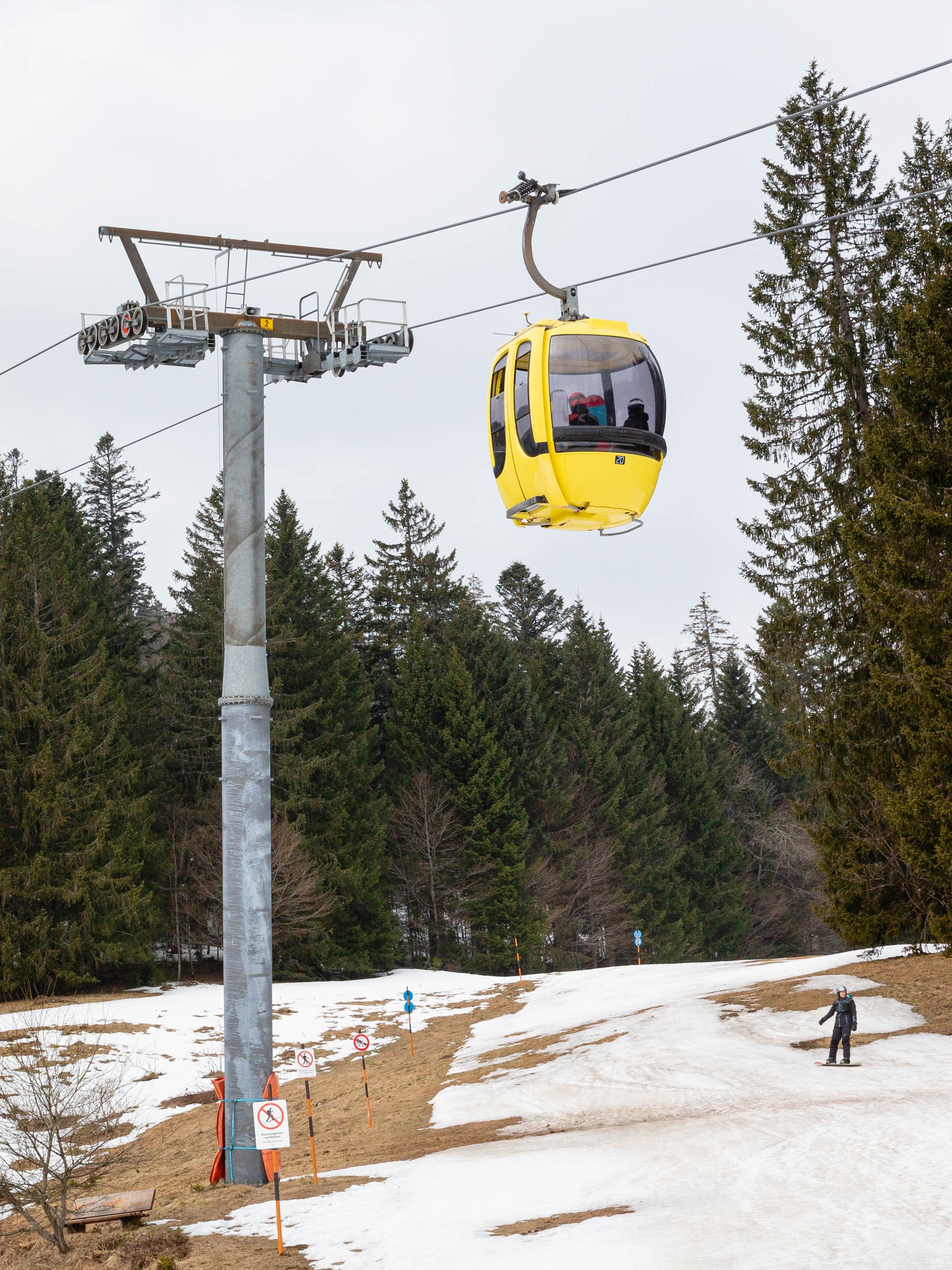Let it snow
Black Forest, 2019—Ongoing
At an altitude of nearly 1,500m, the Feldberg is the highest mountain in the Black Forest, located in southwest Germany. In 1908 the world’s first ski lift went into operation in Schollach, powered by a local watermill. The evolution of a winter sports industry altered this region into a recreational area; tourism has become the main source of revenue. Featuring a subalpine climate and favourable snow conditions, the Feldberg has become a popular destination with a dense network of lifts and slopes.
Climate change causes rising temperatures, reducing snowfall and accelerating melting. For skiing and snowboarding as little as 25cm of compressed snow may be sufficient. Due to a lack of natural snow, resorts worldwide, including those in the Black Forest, invest in snowmaking facilities to extend the season. However, rising operational costs and inconsistent snowfall are increasing financial pressures, threatening long-term sustainability. Artificial snow consists only of water and cold air, with chemicals prohibited in Germany due to their harmful impact on vegetation and soil. Despite these restrictions and technological advances, environmental concerns persist regarding the significant energy and water consumption. In response, regional efforts focus on sustainable alternatives, such as tourism throughout the year and energy-efficient infrastructure, to reduce environmental impact.
Christina Stohn’s early years were spent skiing on the wintry slopes of the Black Forest. These experiences led to this photographic response to the rise in global temperatures, as it impacted on the locality. This is a preview from the wider project. A detailed portfolio is available on request.

